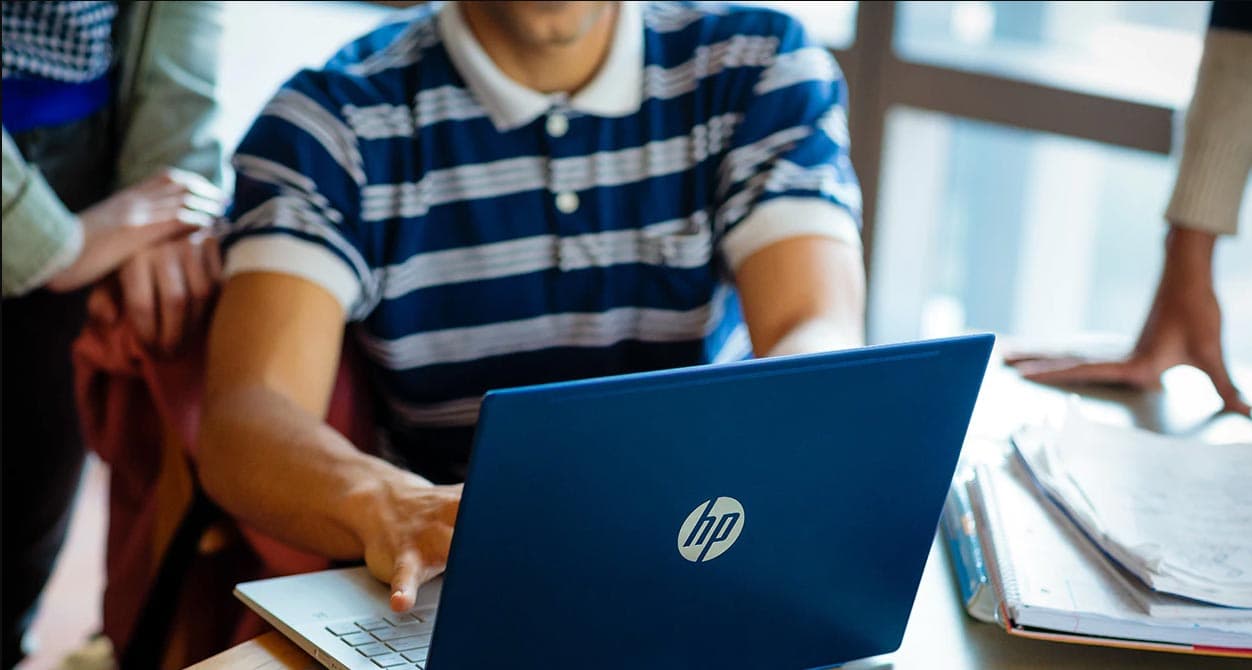Method 1: Using the Windows Key + Shift + S Shortcut
One of the easiest and quickest ways to take a screenshot on an HP laptop without a Print Screen button is by using the Windows Key + Shift + S shortcut. This handy shortcut allows you to capture a specific area of your screen and save it to the clipboard for easy access.
To use this method, simply follow these steps:
- Position your cursor in the area of the screen you want to capture.
- Press the Windows Key + Shift + S simultaneously.
- Your screen will dim, and the cursor will change to a crosshair.
- Click and drag the crosshair to select the desired area for your screenshot.
- Release the mouse button to capture the selected area.
After completing these steps, your screenshot will be automatically saved to the clipboard. You can then paste it into an image editing program, a document, or an email by pressing Ctrl + V.
This method is especially useful when you need to capture a specific section of your screen, such as a menu, a dialog box, or an error message. It eliminates the need to crop the screenshot manually, saving you time and effort.
Additionally, if you have the Windows 10 October 2018 Update or later, you can enable the “Clipboard History” feature to store multiple screenshots in the clipboard. This allows you to easily access and paste previous screenshots without having to retake them.
Overall, using the Windows Key + Shift + S shortcut is a convenient and efficient method for capturing screenshots on an HP laptop without a Print Screen button. It provides flexibility and precision, making it a preferred option for many users.
Method 2: Using the Snipping Tool
If you prefer a more feature-rich screenshot tool, the Snipping Tool is a built-in option that is available on most HP laptops. This tool allows you to capture screenshots of selected areas, windows, or the entire screen with various customization options.
Here’s how you can use the Snipping Tool to take screenshots on your HP laptop:
- Open the Start menu and search for “Snipping Tool”.
- Click on the Snipping Tool application to launch it.
- In the Snipping Tool window, click on “New” to start a new screenshot.
- Select the desired snip type from the available options:
- Free-form Snip: Draw a shape around the area you want to capture.
- Rectangular Snip: Drag the cursor to capture a rectangular area.
- Window Snip: Select a specific window to capture.
- Full-screen Snip: Capture the entire screen.
- After selecting the snip type, your screen will freeze and allow you to capture the desired area.
- Click and drag the cursor to select the area you want to capture.
- Release the mouse button to take the screenshot.
- The screenshot will appear in the Snipping Tool window, where you can annotate it or save it to your desired location.
The Snipping Tool offers additional features, such as the ability to highlight, draw, or add text to your screenshots. It also allows you to set a delay before capturing, which can be useful when you need to capture dropdown menus or hover effects.
While the Snipping Tool is a reliable and versatile tool for taking screenshots on your HP laptop, keep in mind that Microsoft has introduced a new screenshot tool called Snip & Sketch in Windows 10. Snip & Sketch offers additional features and a modernized interface, making it a worthy alternative to the Snipping Tool.
Overall, using the Snipping Tool is an efficient method for capturing screenshots on an HP laptop. Its versatility and customization options make it a popular choice among users who need more control over their screenshots.
Method 3: Using the Screen Sketch Tool
If you’re using a newer version of Windows, such as Windows 10, you can take advantage of the Screen Sketch tool, which provides a seamless and quick way to capture screenshots on your HP laptop.
Follow these steps to use the Screen Sketch tool:
- Press the Windows key + Shift + S to open the Screen Sketch tool.
- Your screen will dim, and a toolbar will appear at the top of the screen.
- Click on the “New” button in the toolbar.
- Use your mouse or touchpad to select the area of the screen you want to capture. You can also use the Pen and Highlighter tools to annotate your screenshot.
- Once you’re satisfied with the screenshot, click on the “Save” button in the toolbar to save it to your desired location. Alternatively, you can click on the “Copy” button to copy the screenshot to the clipboard.
The Screen Sketch tool offers additional features that can enhance your screenshot-taking experience. For example, you can use the ruler tool to draw straight lines or measure distances on your screenshots. You can also customize the Pen and Highlighter tools by selecting different colors and thickness levels.
It’s worth noting that the Screen Sketch tool is an updated version of the Snipping Tool, and it will eventually replace it in future Windows updates. Therefore, it’s recommended to familiarize yourself with the Screen Sketch tool and start using it for capturing screenshots on your HP laptop.
Method 4: Using the Game Bar
If you’re a gamer or frequently use your HP laptop for gaming, you can take advantage of the built-in Game Bar feature in Windows 10. The Game Bar not only allows you to record gameplay but also enables you to capture screenshots effortlessly.
Here’s how you can use the Game Bar to take screenshots on your HP laptop:
- Launch the game or application you want to capture.
- Press the Windows key + G to open the Game Bar.
- In the Game Bar overlay, click on the camera icon or press the “Win + Alt + PrtScn” shortcut to capture a screenshot.
- The screenshot will be saved to your default “Videos/Captures” folder.
The Game Bar also offers additional features that you can explore. For instance, you can use the recorder icon to record gameplay, or the microphone icon to capture audio along with your screenshots. You can also adjust the settings by clicking on the gear icon to customize the quality and format of your screenshots.
While the Game Bar is primarily designed for gamers, it can be used for capturing screenshots in any application or desktop as well. It provides a convenient and quick method to capture and save screenshots without the need for any third-party software.
Keep in mind that some older laptops or versions of Windows may not have the Game Bar feature. If that’s the case, you can consider using one of the other methods mentioned earlier for capturing screenshots on your HP laptop.
Method 5: Using Keyboard Shortcuts for Specific Screenshots
In addition to the previous methods, there are specific keyboard shortcuts that you can use on your HP laptop to capture different types of screenshots. These shortcuts allow you to capture the entire screen, the active window, or a specific area, depending on your needs.
Here are the commonly used keyboard shortcuts for specific screenshots on an HP laptop:
- Press the Print Screen (PrtScn) key to capture the entire screen. The screenshot will be saved to the clipboard.
- Press Alt + Print Screen to capture the active window. This will capture only the currently active window and save it to the clipboard.
- Press Windows Key + Shift + S to capture a specific area of the screen, similar to Method 1.
After capturing a screenshot using these keyboard shortcuts, you can paste it into an image editing program or a document by pressing Ctrl + V.
These keyboard shortcuts provide a quick and efficient way to capture screenshots on your HP laptop without relying on additional software tools. They are especially useful when you need to take screenshots on the go or don’t have access to the Snipping Tool or Game Bar.
It’s a good practice to experiment with these keyboard shortcuts and find the one that works best for your needs. By mastering these shortcuts, you’ll be able to capture screenshots effortlessly and save time in your daily tasks.
Method 6: Using Third-Party Software
In addition to the built-in options, there are several third-party software programs available that can enhance your screenshot-taking capabilities on your HP laptop. These software solutions offer advanced features and a more intuitive interface, allowing you to customize your screenshots and easily share them.
Here are some popular third-party software options for capturing screenshots:
- Greenshot: Greenshot is a free and open-source screenshot tool that offers a wide range of options for capturing screenshots. It allows you to capture the full screen, specific windows, or selected regions. Greenshot also provides annotation features, such as shapes, arrows, and text boxes, to make your screenshots more informative.
- Snagit: Snagit is a feature-rich screenshot tool that offers powerful editing capabilities. With Snagit, you can capture screenshots, record videos, and even create GIFs. It provides a variety of editing tools, including annotations, effects, and resizing options, to enhance your screenshots. Snagit also offers easy sharing options to send your screenshots directly to various platforms.
- Lightshot: Lightshot is a lightweight and user-friendly screenshot tool that allows you to capture screenshots and quickly edit them. It provides various annotation tools, such as text, arrows, and highlighting, to customize your screenshots. Lightshot also features a simple and intuitive interface, making it easy to use for both beginners and advanced users.
When choosing third-party software, consider your specific needs and preferences. Some software may offer more advanced features but may come at a cost, while others may provide basic functionality for free. It’s a good idea to research and try out different software options to find the one that suits your requirements.
Using third-party software can provide you with additional flexibility and customization options when it comes to capturing and editing screenshots on your HP laptop. These tools can be especially beneficial for professionals who require more advanced functionality or for individuals who frequently need to share screenshots for work or personal purposes.


